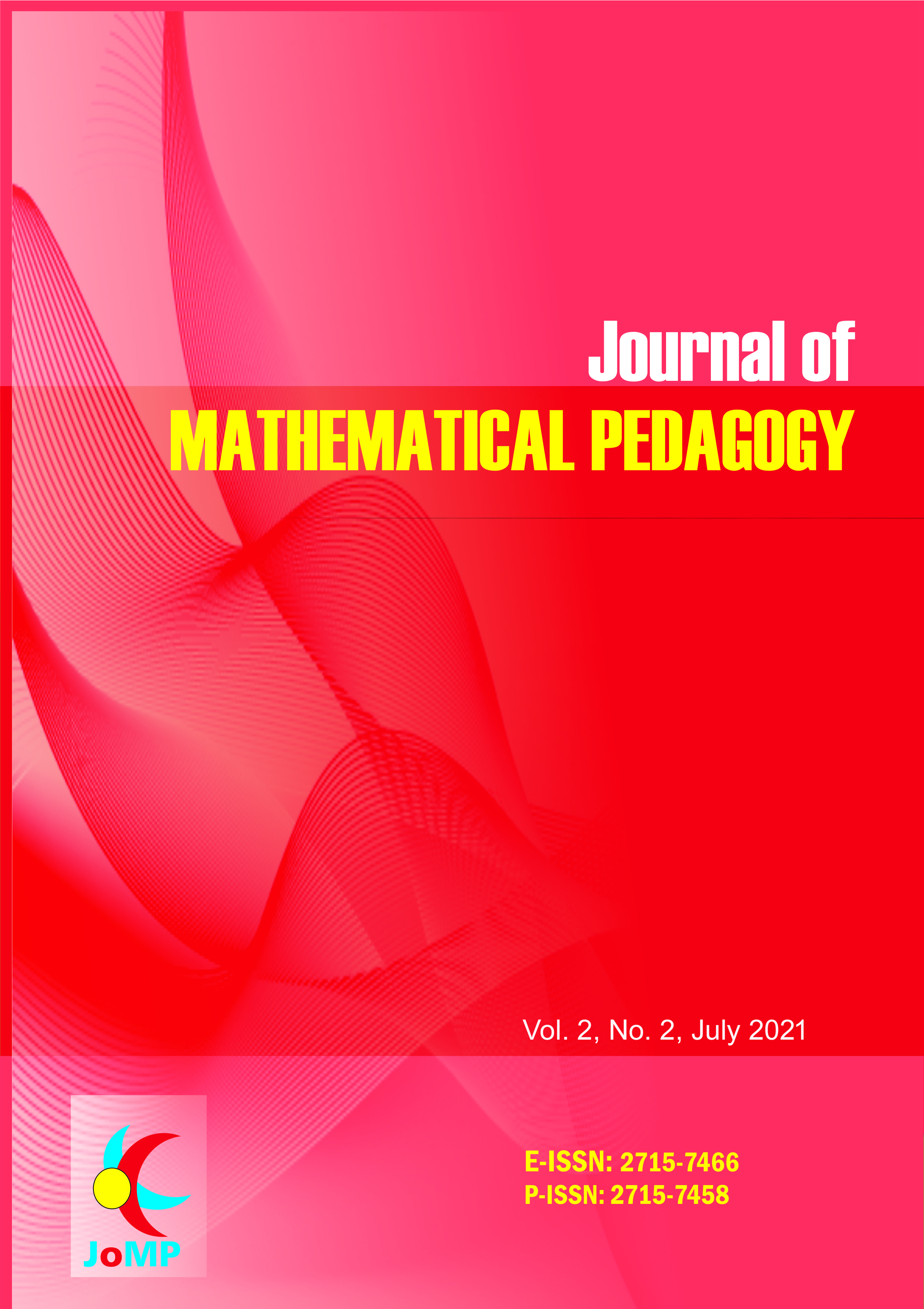Profile of Collaborative Problem Solving among XI Grade Students in Solving Financial Mathematics Problems
DOI:
https://doi.org/10.26740/jomp.v2n2.p82-91Abstract
The aim of this research is to describe CPS profile of XI grade students in solving financial mathematics problem. The subject of this research was three pairs of XI grade students which: a pair student consisting of medium-high ability students, a pair student who are both had high ability and a pair student consisting of low-medium ability students. The result showed that a pair student who are both had high ability were able to answer all the question correctly. A pair student consisting of medium-high ability students almost answered all the questions correctly and a pair student consisting of low and medium ability students were unable to answer all the questions correctly. A pair student who are both had high ability and a pair student consisting of medium-high ability students able to design and do problem solving activities well. They also able to work well together when solving the problems. However, a pair student consisting of low-medium ability students unable to design and do the problem solving activities well. They also unable to work well together when solving the problem and tend to work individually. It can be said that based on collaborative problem solving indicators and problem solving result obtained, collaborative problem solving in a pair student who are both had high ability much better than othes.
References
Andrews, J. J., & Rapp, D. N. (2015). Benefits, Costs, and Challenges of Collaboration. Translational Issues in Psychological Science, 182-191.
Apriani, F., Rohaeni, N., & Anah. (2015). Kemampuan Kolaboratif Mahasiswa pada Perkuliahan Bimbingan Perawatan Anak melalui Kegiatan Lesson Study. Jurnal Kesejahteraan Keluarga dan Pendidikan, 7-15.
Aronson, E., & Patnoe, S. (1997). The Jigsaw Classroom: Building Cooperation in The Classroom (2nd ed.). New York: Longman.
Dillenbourg, P. (1999). Collaborative Learning: Cognitive and Computational Approaches. New York: Emerald Publishing.
Ditjen, Dikdasmen. (2017). Panduan Penilaian oleh Pendidik dan Satuan Pendidikan Sekolah Menengah Atas. Jakarta: Kemendikbud.
Fitri, F. A., Anggraito, Y. U., & Alimah, S. (2018). The Effectiveness of Guided Inquiry Strategy on Students' Collaborative Skill. Journal of Biology Education, 7(2), 144-150.
Hao, J., & Mislevy, R. J. (2019). Characterizing Interactive Communications in Computer-Supported Collaborative Problem-Solving Tasks: A Conditional Transition Profile Approach. frontiers in psychology, 1-9.
Hao, J., Liu, L., Davier, A. A., Kyllonen, P., & Kitchen, C. (2016). Collaborative Problem Solving Skills versus Collaboration Outcomes: Findings from Statistical Analysis and Data Mining. International Conference on Educational Data Mining, (pp. 382-387). Raleigh.
KBBI. (n.d.). Arti kata kolaboratif - Kamus Besar Bahasa Indonesia (Online). Retrieved April 26, 2021, from https://kbbi.kemdikbud.go.id/entri/kolaboratif
Latip, A., Andriani, Y., Purnamasari, S., & Abdurrahman, D. (2020). Integration of Educational Robotic in STEM Learning to Promote Students' Collaborative Skill. 5th Seminar Nasional Matematika dan Pendidikan Matematika (SENATIK) (pp. 1-6). Semarang: IOP Publishing.
Malach, T. J., Meade, M. L., & Morrow, D. G. (2012). The Effect of Expertise on Collaborative Problem Solving. Thinking & Reasoning, 32-58.
Masrurotullaily, Hobri, & Suharto. (2013). Analisis Kemampuan Pemecahan Masalah Matematika Keuangan Berdasarkan Model Polya Siswa SMK Negeri 6 Jember. KadikmA: Jurnal Matematika dan Pendidikan Matematika, 129-138.
OECD. (2014). PISA 2012 Results: Creative Problem Solving: Students' Skill in Tackling Real Life Problems (Volume V). Paris: OECD Publishing.
OECD. (2016). Skills Matter: Further Result from the Survey of Adult Skills. Paris: OECD Publishing.
OECD. (2017). PISA 2015 Result (Volume V): Collaborative Problem Solving. Paris: OECD Publishing.
Rianti, R. (2018). Profil Kemampuan Pemecahan Masalah Matematis Siswa SMP Pada Materi Bangun Ruang Sisi Datar. Jurnal Pendidikan Tambusai, 802-812.
Ross, M., Spencer, S. J., Blatz, C. W., & Restorick, E. (2008). Collaboration Reduces the Frequency of False Memories in Older and. Psychology and Aging, 85-92.
Safitri, H. A. (2018). Profil Berpikir Siswa dalam Memecahkan Masalah HOT ditinjau dari Kemampuan Matematika. MATHEdunesa: Jurnal Ilmiah Pendidikan Matematika, 1, 32-39.
Todd, J. A., & Forsyth, C. M. (2020). Exploring Social and Cognitive Dimension of Collaborative Problem Solving in An Open Online Simulation-Based Task. Computers in Human Behavior, 1-12.
Widjajanti, D. B. (2009). Kemampuan Pemecahan Masalah Matematis Mahasiswa Calon Guru Matematika: Apa dan Bagaimana Mengembangkannya. Seminar Nasional Matematika Dan Pendidikan Matematika, (pp. 402-413). Yogyakarta.
Yang, X. (2017). On the Emergence, Development and Prospect of Financial Mathematics. Modern Economy, 1129-1134.
Yuliastuti, M. (2014). Pengembangan Bahan Ajar Aritmatika Sosial pada Siswa SMP Kelas VII dengan Pendekatan Saintifik. Prosiding Mathematics and Sciences Forum, 617-624.
 Abstract views: 182
,
Abstract views: 182
, PDF Downloads: 240
PDF Downloads: 240





